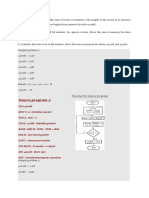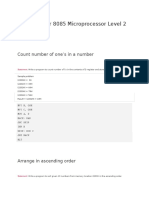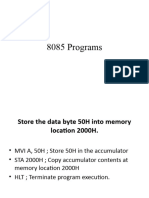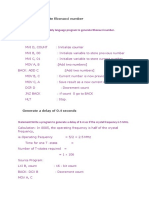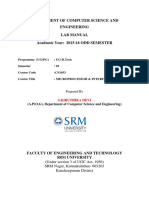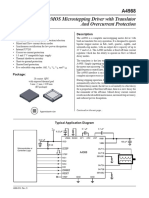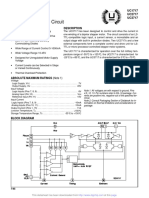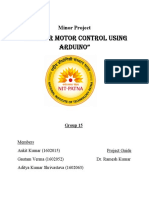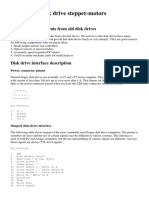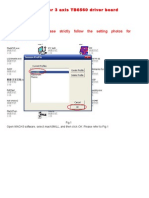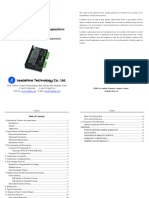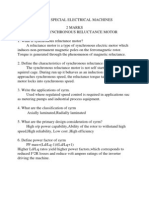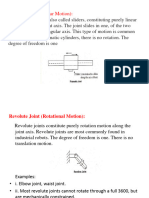0% found this document useful (0 votes)
114 views17 pagesStatement:: Write An ALP Using 8085 To Evaluate The Expression C A +B
The document contains 13 programming statements related to 8085 assembly language programs. The programs cover tasks like evaluating mathematical expressions, calculating sums of series, finding squares, sorting arrays, converting between BCD and binary numbers. For statement 12, the summary is:
1) A 2-digit BCD number is stored at memory location 2200H
2) The program unpacks the BCD number into its decimal digits, multiplies the digits by the appropriate place values, adds them and stores the binary equivalent at memory location 2300H.
3) The key steps are unpacking the BCD number, multiplying the digits by 10 (place value), adding the results and storing the final binary number.
Uploaded by
Jeyakrishna SridharCopyright
© Attribution Non-Commercial (BY-NC)
We take content rights seriously. If you suspect this is your content, claim it here.
Available Formats
Download as DOCX, PDF, TXT or read online on Scribd
0% found this document useful (0 votes)
114 views17 pagesStatement:: Write An ALP Using 8085 To Evaluate The Expression C A +B
The document contains 13 programming statements related to 8085 assembly language programs. The programs cover tasks like evaluating mathematical expressions, calculating sums of series, finding squares, sorting arrays, converting between BCD and binary numbers. For statement 12, the summary is:
1) A 2-digit BCD number is stored at memory location 2200H
2) The program unpacks the BCD number into its decimal digits, multiplies the digits by the appropriate place values, adds them and stores the binary equivalent at memory location 2300H.
3) The key steps are unpacking the BCD number, multiplying the digits by 10 (place value), adding the results and storing the final binary number.
Uploaded by
Jeyakrishna SridharCopyright
© Attribution Non-Commercial (BY-NC)
We take content rights seriously. If you suspect this is your content, claim it here.
Available Formats
Download as DOCX, PDF, TXT or read online on Scribd
/ 17





